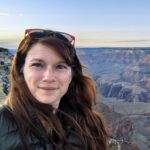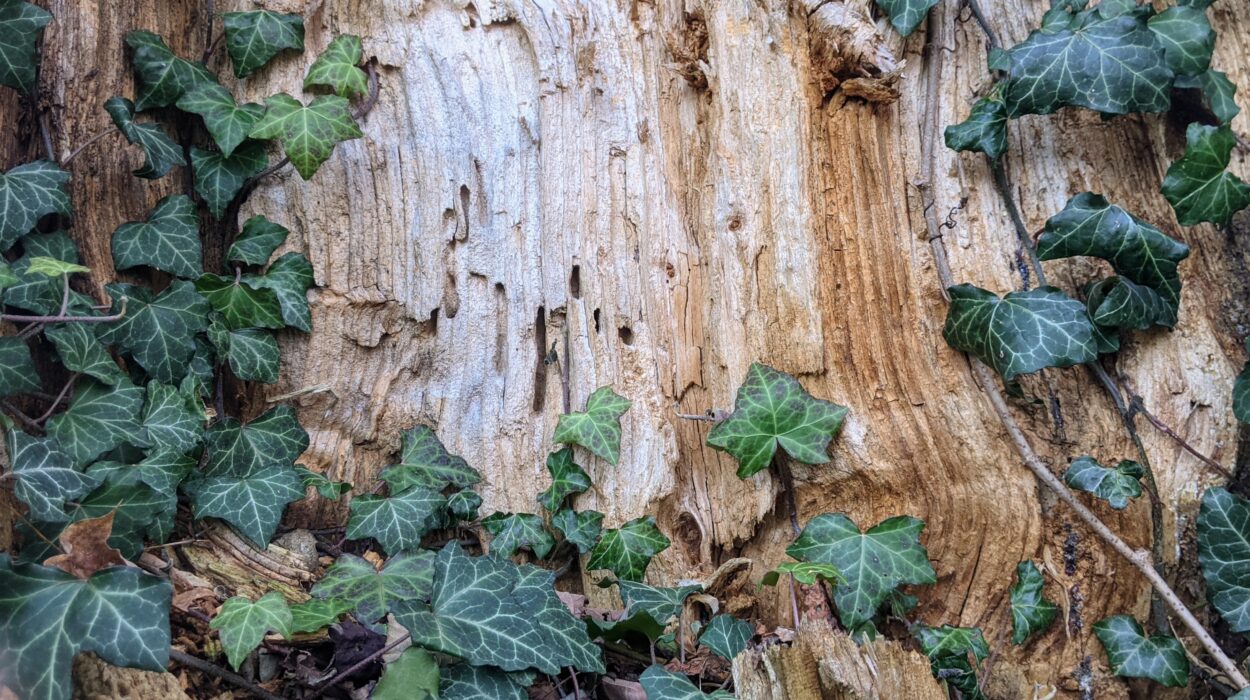Reflecting on the grief we’ve felt this week in the Pacific Northwest—huddled around filter fans, watching smoke paint the sky orange as ancient forests burn—a bittersweet yet comforting memory surfaced from my youth, when I lived in a nuclear zone and was convinced that nature wouldn’t even make it this far.
When I left my rural upbringing to attend college, I felt completely unprepared for the outside world that I so desperately wanted to see before it was gone. Whenever I was hurt or confused or overworked by life, I’d go sit in the center of Stump—an enormous walnut trunk in a small grove on campus, big enough to curl up on—and look at the clouds or the stars. I’d imagine the great big world ‘Out There’ and soothe my soul with promises to myself—and to the Earth that I already knew was dying faster than I could save the dollars to see.
Then one day, for no reason other than it was an eyesore, they turned Stump into sawdust.
A friend came running to tell me, but I arrived too late to do anything but glare. After the workers finally left, I kicked off my shoes, gathered my skirt around my knees, and sat on top of the mountain of woodchips, not caring how much of a treehugger or hillbilly I looked.
And then something beautiful occurred—a student whom I didn’t know came up and said “I was thinking about you when I saw them, I’m so sorry.” Then another arrived to say something similar and to share how they, too, sometimes came to Stump for peace. A teacher approached and told me he’d often taught his classes from Stump. Then another. The group grew, and the hours passed as people continued to come, paying their condolences to the sawdust and sharing memories of its quiet presence in their lives.
I still have a piece of Stump. I kept it to remind me of the arboreal family member that supported me through so much. But today it reminded me of something even more important.
All those times that Stump soothed, encouraged, and strengthened me—and so many others—she was already dead.
I’ve spent half of my life dreading the dying of the world, watching it die with my own eyes. I’ve seen the ocean vomit plastic, forests burn, beaches wash away. I’ve seen deserts form where there were once marshes, rivers turn orange, tree roots cram through attic windows—this is my inheritance. I’ve always known that.
But even after all these years, Stump remains a reminder that Life is the most relentless force on this planet. It exists in the deepest parts of the ocean, the darkest caves, the highest mountaintops, and even in the dust of the dead and dying. We can’t stop so much of the destruction we’ve set in motion, but what is left to us is still far more than we can grasp now.
As much as my heart bleeds daily, I don’t want to spend the rest of my finite time with Mother Earth in mourning. I am learning to love her through it all—her shriveled, balding head, her wrinkled, toothless grin after yet another painful racking of her body, her voice in my ear saying, Hush, child. You will be okay. Isn’t life beautiful?
It hurts. I won’t sugarcoat it. But there is still Life in the dying. There is still beauty, still space for the ecstasy of existence.
We have to hold onto that.

Jess Lee
JESS LEEis an environmental & community advocate drawn to borders, ecotones, and the shadows between the lines. She was raised in the forests of Appalachia and lived for many years in Mexico, Hawaii and the Pacific Northwest. Her short stories and essays have been published in Cutthroat, Burnt Pine, The Humanist and Z Magazine.

